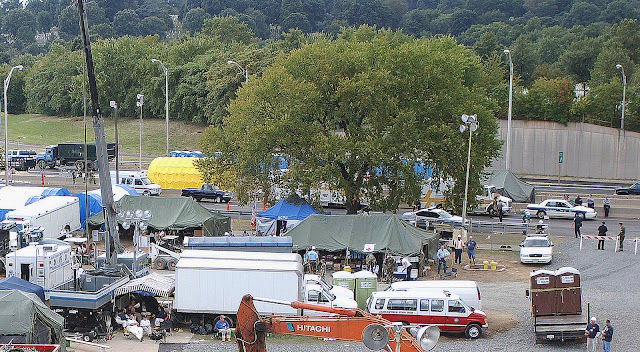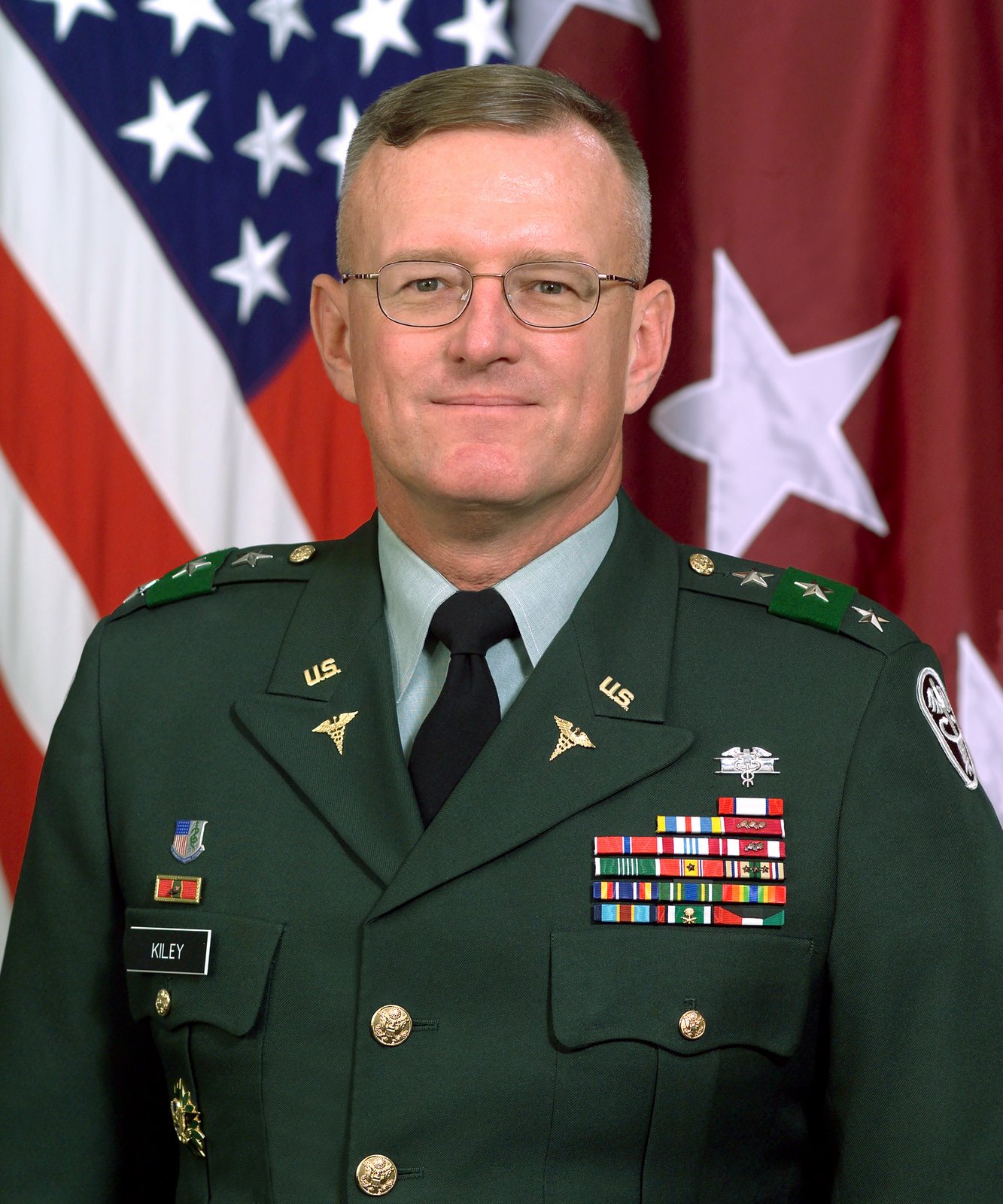The policy in effect in late 2001 regarding the registering of a domain name, required that the contact information be included in a public database known as WHOIS. The original Whois page for critical thrash listed a James Schauer, 5913 Highdale Cir, Alexandria, Virginia 22310 as the registrant. Schauer must not have been very happy with this availability, and the internet began to be modified.
I make an unavoidable connection with Schauer, the peripatetic naval officer.
Young Schauer has been coming up in the world since he went west, although he was winning awards even before 9-11 gave a jumper-cable boast to his career nipples. Like winning a 1rst-place prize in 1998, in the Military-Funded Newspapers, Large category, while in the Naval Reserve Force Public Affairs Office in a still-dry New Orleans, he was one of four "significant contributors" working under a "primary contributor," Patricia Antenucci's winning effort in the pages of the Naval Reservist News. Go Team player!
In my weakest stevenwarran blog posting to date, my inner ear wasn't militarily attuned and acronym-buffed when, I passed on, “The BCO message board is apparently a byproduct of an DARPA military funded program.” DARPA, SMARPA. What I meant to say was DINFOS.
 The CPOs and their 93 selectees had perfect late summer weather during the training leading up to the ceremony. Each and every one will never forget their initiation day as they were finally told to "Go be a Chief." NAS Whidbey Island Crosswind May 30, 2003
The CPOs and their 93 selectees had perfect late summer weather during the training leading up to the ceremony. Each and every one will never forget their initiation day as they were finally told to "Go be a Chief." NAS Whidbey Island Crosswind May 30, 2003Whatever. James' dear old alma mater, The Defense Information School, housed in a 232,000 square-foot facility in Ft. Meade, Maryland, where in classrooms and labs that are equipped with the latest state-of-the-art equipment, about 4,000 students are trained each year.
Combining the school's subtitle, "The Center of Excellence For Visual Information and Public Affairs," along with its motto, "Strength Through Truth," results in a nearly perfect Orwellian oxymoron.
"Military and civilian graduates of the School can be found in almost every major broadcast, newspaper, public affairs or visual information related operation in the United States and overseas." Go Team Spirit! Give me a G! Give me an A! Give me a N! Another N! An E! Give me a T, and another T! What does that spell? Thirty-Something Eyewitnesses! Yeah!
Someone with indubitably too much time on his hands, a certain Bruce Moore, updated a report in August 2006, called Chief Photographer’s Advancements from 1946-2005, where we see the select crowd who make the cut: (I'm warning you! Don't click on when did he make chief? link, unless you want about 8-pages of lambda code down on your computer! It's there, but don't touch !)
(Actually, a lot of time. Mr. Moore is now working as a Texas prison guard, for some reason, letting others take the pictures.)
Mr. Moore was at one time web master for the NATIONAL ASSOCIATION OF NAVAL PHOTOGRAPHY, where a certain Mr. Tim Timmerman was co-chair of a merchandise committee. My, such a small world.
Although the name Steve Riskus was mocked early on as an obvious contrivance, everybody gave it a pass as a realname for some reason. Why? We understood it within its context, where names on boards like criticalthrash, crewcial, trogdor, and vlv, were anonymous representations, like my favorites, tryviolence, or BiFurious, signaling as coded surrogates, more amusing as fill-ins perhaps than the real people.
Was it because of the following, where an excess of contact information overexposes him, and lulls us with his availability?
"I took these pictures seconds after I saw an American airlines 757 crash into pentagon. I was heading towards 395 on route 27 when the plane crossed my path about 100ft ahead and crashed into the side of the pentagon.We go to Whois.net to verify the famous smoking-gun date-fact--criticalthrash was set up on 09/10/01, the same day Rumsfeld announced $2.3 trillion in defense budgeting had been unaccountably spent--and we have our little "Ha! Ha!" moment, but apparently no one stopped to ask why the registry document had been purged of the personal contact information, which is the point of an official domain record.
Steve Riskus
SteveRiskus@aol.com
AIM: youthenraged
+1 703 856 1855 begin_of_the_skype_highlighting +1 703 856 1855 end_of_the_skype_highlighting begin_of_the_skype_highlighting +1 703 856 1855 end_of_the_skype_highlighting
+1 703 856 1855 (nextel phone)
+1 703 333 6705 (work)
+1 703 313 9209 (home
Ask yourself, would anybody, either an up-and-coming yuppie or a post-ironic hipster, ever take a photograph like this one--let's say....shell-shocked, accidentally......of his arm....cull it out of a series as irrelevant, but then leave it to linger in a nearby folder? I hate to delete anything myself but I definitely would have rotated it clockwise a quarter-turn, that is if I'm not Karen Hughes.
Index of Terror
xjacktarx posted this on October 28th, 2006 @ 6:03:48 pmIt's better to let sleeping dogs lie, xjacktarx. I found the punkforum.com board for 9-11-01 archived. I'll post a scan when I can get back into my computer. All together it allows a tiny bit of insight into the reality and surreality of the day. Here I cherry-pick some threads:
That guy says you waited months to make those photos public, but didn’t you post them on pr.n or pf.c or whatever it was on the actual day of the attacks?
- jen 10:13am
the pentagon just blew up. - riskus 10:48am
picture of the pentagon I took - Jesse 10:55am
hijacked plane circling Dulles? - riskus 11:22am
I SAW THE PLANE HIT THE PENTAGON!!!!! - Scott 12:04pm
let's play 'GUESS WHERE THE PRESIDENT IS?' - riskus 12:35pm
pieces of the plane hit my car
And who is TYLER, who at the exact same moment as Riskus' excitable 11:22am message says this: "Pentagon hit for the third time."?
The following snippet of message-board dialog between carvegrind (J. Stapula) and Riskus is from a thread at board.crewcial.org, called 'the 9/11 pentagon conspiracy,' where the 9-11 conspiracy has been trash talked to death for over 16 months. (Apparently, this is the entirety of the communication.)
riskus reposted this bit of September 11, 2001 board transcript on February 16th, 2007 @ 9:30:32 am(First, note that he has changed the descriptive paragraph--understandably removing the telephone numbers-too TMI, but also taking out questionable facts about his siting and orientation, which only feeds conspiracy blogger's paranoia.)
my friend just told me he had saved my initial im conversation i had with him on this day. I was actually on my way to his house when it happened to help work on the pool we were building.The Riskus' Shots: "A Ton Equals Thirteen"
- youthenraged: pieces of the plane hit my car
- youthenraged: the plane went right in front of my car
- CARVEGRIND: you are kidding.........FUCK, what?!!!
- youthenraged: im serious
- youthenraged: i got tons of pics
- CARVEGRIND: fuck!!!!!!!!...I'm glad you are ok
- CARVEGRIND: ....did you take any video?
- youthenraged: no
- youthenraged: i didnt think to
- youthenraged: i though i was dead
- CARVEGRIND: I bet
- CARVEGRIND: you are ok though right?
- youthenraged: yeah i think
- youthenraged: i will come by later
- youthenraged: and i will still be there tomorrow if it still goes on
- CARVEGRIND: no sweat man......I'm sure traffic is really REALLY BAD
- youthenraged: people are going the wrong way on 395
- youthenraged: at least when i was on it
- CARVEGRIND: another plane crashed in a Pennsylvania airport
- CARVEGRIND: like actually on the wrong side?.....INSANE
- youthenraged: yeah
- youthenraged: did josh sho wup
- youthenraged: www.youthenrage.com/terror: more pics
- CARVEGRIND: yes he is here
- youthenraged:im scared man
- youthenraged: pieces hit my car
- youthenraged: people started running across the road
- CARVEGRIND: I heard there's another plane circling around Dulles thats hijacked
- youthenraged: jesus
- youthenraged: turn the pond into a bomb shelter
- CARVEGRIND: my neighbor across the street has a bomb shelter.
- youthenraged: nice
"I took these pictures less then 1 minutes after I watched the American airlines 757 airplane crash into the pentagon on september 11 2001. I left shortly after the picture were taken in fear of further attacks. Feel free to contact me anytime if you have questions about the pictures.
Yes, I did actually see the plane impact the building.
Steve Riskus
steveriskus[at]aol[dot]com
AIM: youthenrage"
Photograph #1 Beginning on Route 27 north of the heliport, where he said he saw the plane one hundred feet ahead of him, and moving in the likely order in which he took the shots, the first image is unexceptional, revealing little of interest other than establishing a basic reference point to the overhead metal sign.
 Riskus would have had to climb up a concrete retaining wall edging a rise in Arlington cemetery in order to gain the vantage point for images #2, #3 and #4, after first shooting #1 at grade, well to the right of the the overhead sign.
Riskus would have had to climb up a concrete retaining wall edging a rise in Arlington cemetery in order to gain the vantage point for images #2, #3 and #4, after first shooting #1 at grade, well to the right of the the overhead sign.Since two lamp poles are seen in shots #2 and #3, Riskus would need to be up at the extreme right of the wall in this FEMA image below. This seems too high to me, even taking foreshortening into consideration, but the only other alternative would be having him stand on the roof of his car, and I would tend to find that even more unusual behavior.
 It would have been easier for Riskus to have mounted the precipice at the southwest end, nearer to where these folk have found a shady, out of the way perch for a good looksee, just behind the spot where the Di Lorenzo Tri-Care Health Clinic is setting up a pharmacy in the middle of the Route 27 on the afternoon of 9-11, even though no casualties were removed from the Pentagon after the first half-hour.
It would have been easier for Riskus to have mounted the precipice at the southwest end, nearer to where these folk have found a shady, out of the way perch for a good looksee, just behind the spot where the Di Lorenzo Tri-Care Health Clinic is setting up a pharmacy in the middle of the Route 27 on the afternoon of 9-11, even though no casualties were removed from the Pentagon after the first half-hour.And coming as a surprise! It was the shock that transformed us! That's how we can tell one another apart now!
I just can't identify with someone who would follow that up by clambering up a roadside verge retaining wall in order to achieve the result of only five milquetoast images, but getting back to the relative safety of his car to get the hell out of there, (as conditions permitted) who would then stop, and imped other's retreat, to finish up a partial roll with surrealistically unimportant shots.
And let us not forget to ask why he would then on his own dime post to and maintain for five years, a contextless web page of these images, at what must amount to a huge expense in bandwidth, so that we may know them, all the while complaining about the attention he's getting.
I think his team tried its hardest, but so many things went wrong here, leaving aside the date the domain was registered, which obviously they couldn't change, because they changed everything else, and in eliminating the contact information, they gave great weight to what they took out. Unfortunately, the record has to stand alongside the crewcial page registered by Ian Meyer using his Burlington Iowa persona.
I guess you just have to know what it's like to go without an information flow--pressing your nose up against the glass to see all the steaming knowledge buns inside--to understand the power in not knowing something.
So "steve" was on RT 27 heading towards I-395, about 100 feet away from where the plane crossed, stuck in traffic (but alone, since his lanes are empty in the foreground, although up ahead Father McGraw and Loyde England are blocking lanes, so traffic was halted back where?) while people mill distractedly on the other side of the concrete divide showing an unbelievable disparate focus.
MORE EXPLICATING TO FOLLOW:
The escape route--what Riskus knew, when did he know it. What was his route home and did he head back into the District before going to 5913 Highdale Circle, in Alexandria?
And off the road to hell: how does the devil get limestone to burn and smell like sulpher? What the images do show discernible in the flames.
WITH THE IMPLICATIONS JUST KEEP GETTING WORSE:
From a previously unimaginable deliberate inter-services slaughter, to an even more sinister intra-navy precision strike. Was Mrs. Sincock targeted by name and was Lt. Brian Birdwell only lightly toasted!
(All of the photographs used in this piece have been cleaned of underlying computer code and are safe for downloading and use in research. Be careful of all images, especially those issued by government and military sources, as they frequently carry over 1MB in underlying code--the purpose of which can only be imagined.)
Why is that mound of earth and rubble doing in the middle of the clover leaf? It's presence makes no sense. There is no road construction to be seen in any of the photographic record. Were they shooting things out of it?











